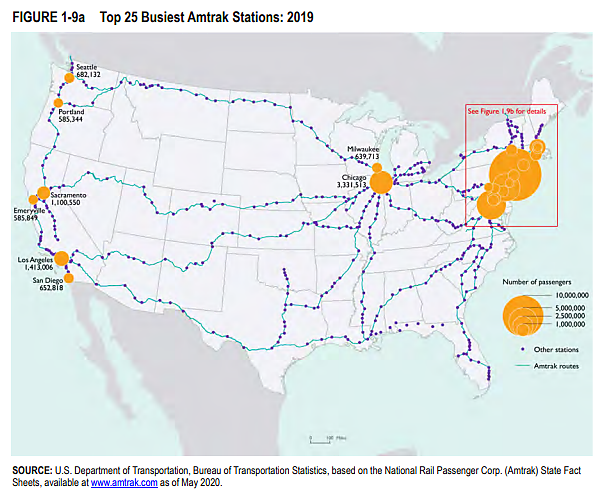My daughters have gone to college in Pittsburgh and Poughkeepsie, NY. As they will be traveling back and forth to D.C., we have compared transportation options. For Pittsburgh, the best option is Megabus. For Poughkeepsie, it is Amtrak.
For Pittsburgh, we were surprised to find that rail is much slower than bus. Because of the mountains between D.C. and Pittsburgh, trains need to zig zag more than highways as elevation changes. Amtrak’s trip between D.C. and Pittsburgh is 7 hours 43 mins, while Greyhound’s (with a stop in Baltimore) is 6 hours 15 mins. Even better, Megabus provides 5‑hour service direct between D.C. and Pittsburgh college campuses on high-demand days.
Rail does not appear to make sense between Pittsburgh and D.C., so it is not clear why Amtrak runs the line. Government infrastructure decisions are often based on politics, not on economic or environmental sense. That can be true for passenger rail, highways, urban transit, postal services, and water infrastructure. The map at the bottom shows that most rail demand is in the Northeast, but parochial politics induces Amtrak to run heavily subsidized routes in other parts of the country where rail makes little sense.
The infrastructure bill passed in November provides $66 billion in new funding for Amtrak. That is a lot of money for a transportation mode that carries relatively few passengers. Randal O’Toole noted that in 2019, “Americans traveled an average of 15,000 miles by automobile, 2,100 miles by plane, and 1,100 miles by bus. Amtrak’s contribution was less than 20 miles per person.”
I favor privatizing Amtrak and ending the subsidies. But now that the new funding has passed, we should make sure it is not invested in routes where rail has no chance of competing against bus and air.
Ilana Blumsack and I compared 12 city pairs that have direct Amtrak and intercity bus services. The table shows the route times from Amtrak and bus company websites. Amtrak was substantially slower than buses on these routes, suggesting that these are the sorts of routes that Amtrak should drop. Why would anyone take the train from Dallas to Austin when bus takes half the time?
A 2013 study sponsored by the American Bus Association and two thinktanks looked at 20 city pairs that had direct Amtrak and bus service. It found that trains were faster on half the routes and buses faster on the other half. Bus prices were cheaper than train prices on most of the routes, and buses created less environmental harm. Considering overall operating and capital costs, bus services cost just one-quarter as much as train services on these routes.
Randal O’Toole has made similar points about the uncompetitiveness of rail here, here, here, and here. I have noted other Amtrak shortcomings, including mediocre service quality, an inflexible unionized workforce, and generally poor management.
Amtrak should use its new funding to help fix these problems. But because it is a government agency, I fear the funding gusher will instead encourage bloat and further bad investment choices.


